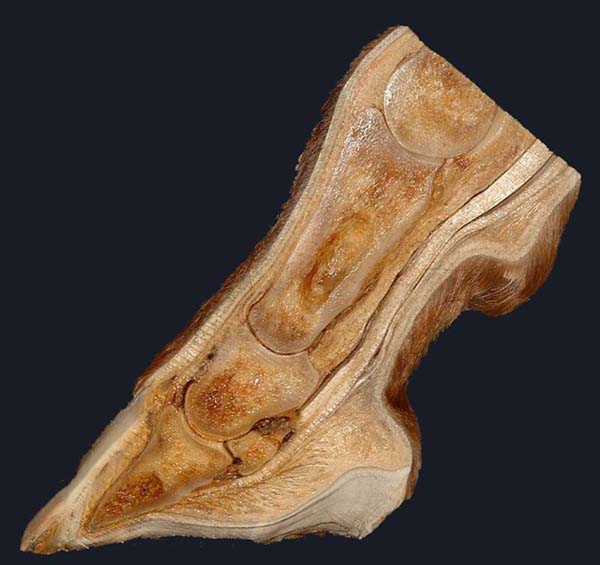Effect of Insulin on the Hoof Laminae
 Equine Science Update by: Mark Andrews
Equine Science Update by: Mark Andrews
Most cases of laminitis are associated with metabolic disturbances – often involving elevated blood levels of insulin. How the hyperinsulinaemia results in laminitis is not fully understood. One possible mechanism has been identified in a recent study that showed that insulin weakens the structural integrity of equine lamellae.
A laboratory study used explants (small portions of hoof wall, lamellar tissue and distal phalanx) maintained in tissue culture medium. Half of the explants were kept in plain culture medium; the other half were grown in medium supplemented with insulin (2.5 μg/ml). After eight hours, the explants were subjected to biomechanical testing.
The authors report: “Lamellar explants that had been incubated in medium supplemented with insulin failed at significantly lower load (P = 0.0001) and lower stress (P = 0.001) and had greater elongation to failure (P = 0.02).” They conclude that insulin weakens the structural integrity of equine lamellar explants.
They suggest that this laboratory model will be useful for further studies hyperinsulinaemia‐induced lamellar failure.
For more details, see:
Ex vivo effects of insulin on the structural integrity of equine digital lamellae
Sandow, C., Fugler, L.A., Leise, B., Riggs, L., Monroe, W.T., Totaro, N., Belknap, J., Eades, S.










